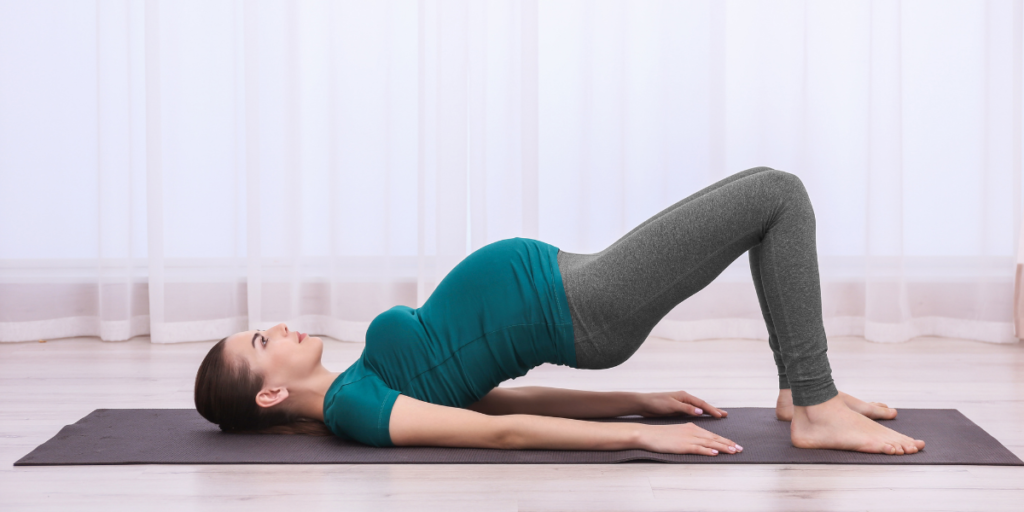Anal fissures are small tears in the lining of the anus that can cause significant discomfort, especially during and after bowel movements. Common symptoms include sharp pain, bleeding, and itching. Factors such as passing large or hard stools, straining during bowel movements, constipation, and frequent diarrhoea can lead to the development of anal fissures.
Incorporating specific exercises into your routine can aid in alleviating symptoms and promoting healing by strengthening the pelvic floor and surrounding muscles, enhancing blood flow, and reducing strain during bowel movements.
Here are some exercise for anal fissure beneficial for individuals with anal fissures:
- Kegel Exercises: Kegels target the pelvic floor muscles, which support the bladder, intestines, and uterus. Strengthening these muscles can reduce strain on the anal sphincter. To perform Kegels:
- Identify your pelvic floor muscles by attempting to stop urination mid-flow; the muscles used are your pelvic floor muscles.
- Contract these muscles, hold them for five seconds, and then relax for five seconds.
- Repeat 10 times per session, aiming for three sessions daily.
2. Squats: Squats strengthen the lower body and promote relaxation of the anal sphincter, facilitating easier bowel movements. To perform squats:
- Stand with feet shoulder-width apart.
- Lower your body as if sitting back into a chair, keeping your back straight and knees over your toes.
- Descend until your thighs are parallel to the floor, then rise back to the starting position.
- Perform two sets of 10 repetitions daily.
3. Glute Bridges: This exercise targets the gluteal muscles and reduces strain on the anal region. To perform glute bridges:
- Lie on your back with your knees bent and feet flat on the floor.
- Engage your core and glute muscles, then lift your hips off the floor until your body forms a straight line from shoulders to knees.
- Hold for a few seconds, then slowly lower back down.
- Aim for two sets of 10 repetitions daily.
4. Lunges: Lunges enhance lower body strength and improve flexibility, aiding in reducing strain during bowel movements. To perform lunges:
- Stand upright with feet together.
- Step forward with one leg, lowering your hips until both knees are bent at about a 90-degree angle.
- Ensure your front knee is directly above your ankle, not pushed out too far.
- Push back to the starting position and repeat on the other leg.
- Perform two sets of 10 repetitions on each leg daily.
5. Hip Extensions: Strengthening the hip muscles can alleviate pressure on the anal area. To perform hip extensions:
- Stand upright, holding onto a sturdy surface for balance.
- Slowly extend one leg backwards without bending the knee, keeping your back straight.
- Hold for a few seconds, then return to the starting position.
- Repeat 10 times per leg, aiming for two sets daily.
6. Clamshells: This exercise targets the gluteus medius, aiding in pelvic stability and reducing anal strain. To perform clamshells:
- Lie on your side with legs stacked, knees bent at a 90-degree angle.
- Keeping your feet together, raise your top knee as high as possible without shifting your hips.
- Pause, then return to the starting position.
- Perform two sets of 10 repetitions on each side daily.
7. Low Back Extensions: Strengthening the lower back supports better posture and reduces strain during daily activities. To perform low back extensions:
- Lie face down on a mat with arms at your sides.
- Slowly lift your chest off the ground as far as comfortable, keeping the neck neutral.
- Hold for a few seconds, then gently lower back down.
- Aim for two sets of 10 repetitions daily.
In addition to these exercises, incorporating aerobic activities like walking or swimming can enhance overall blood circulation, promoting healing in the anal region. Regular physical activity also helps maintain healthy bowel function, reducing the risk of constipation — a common contributor to anal fissures.
It’s essential to combine exercise with other self-care measures for optimal healing:
- Dietary Adjustments: Consuming a fiber-rich diet softens stools and promotes regular bowel movements, reducing strain on the anal area. Incorporate whole grains, fruits, vegetables, and legumes into your meals. Adequate hydration is also crucial; aim to drink at least eight glasses of water daily.
- Sitz Baths: Soaking the anal area in warm water for 10–15 minutes several times a day can relax the anal sphincter, alleviate pain, and promote healing. This practice increases blood flow to the area, reducing inflammation and discomfort.
- Topical Treatments: Applying over-the-counter creams or ointments can provide relief.
For more information, visit us at Chirag Global Hospitals. We understand the importance of staying active and healthy, which is why we offer a variety of treatments and therapies to help patients manage anal fissures. Our team of highly qualified medical professionals is available to answer any questions about treatment options or lifestyle changes that can help prevent fissures. Call us today to learn more!





Comments